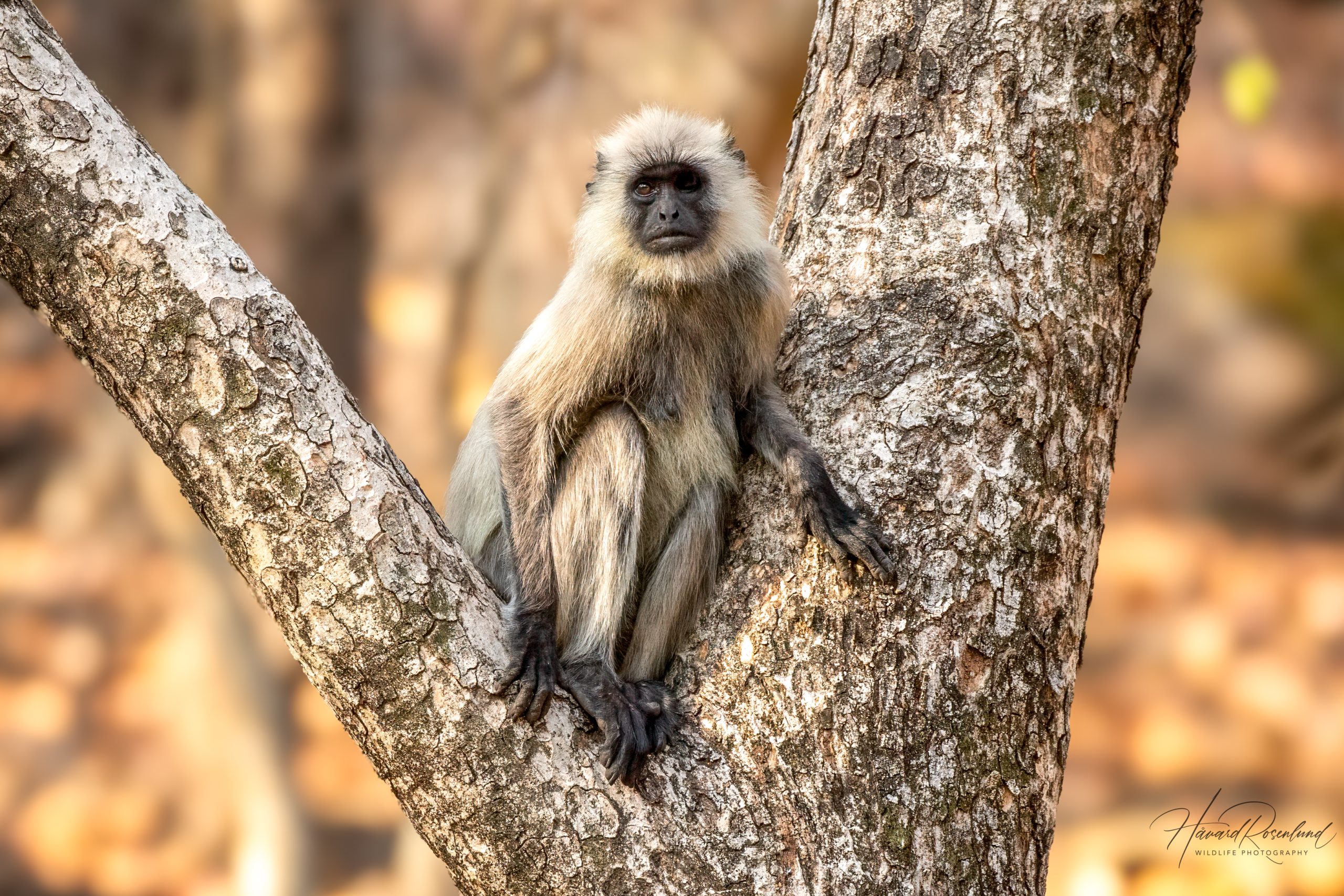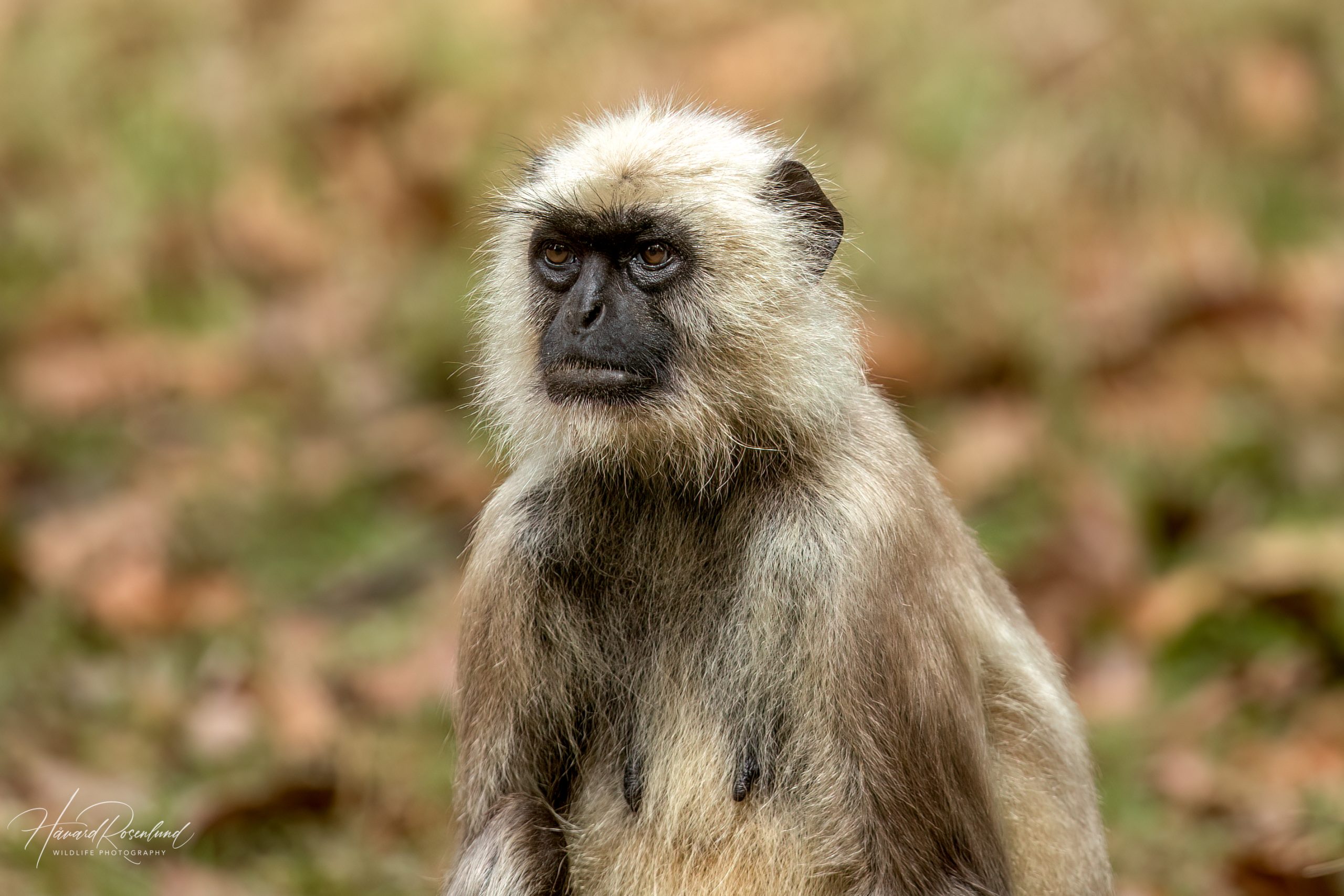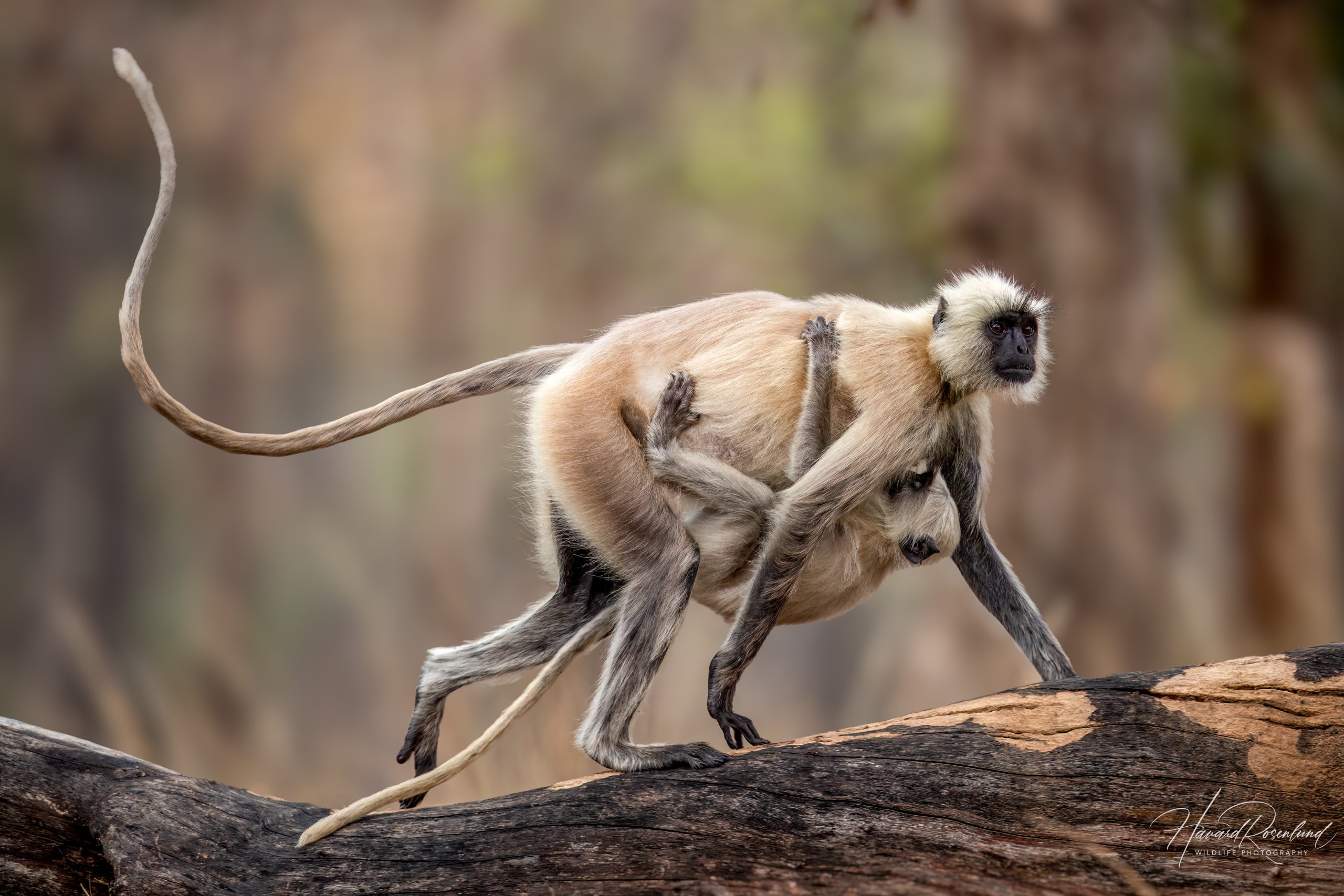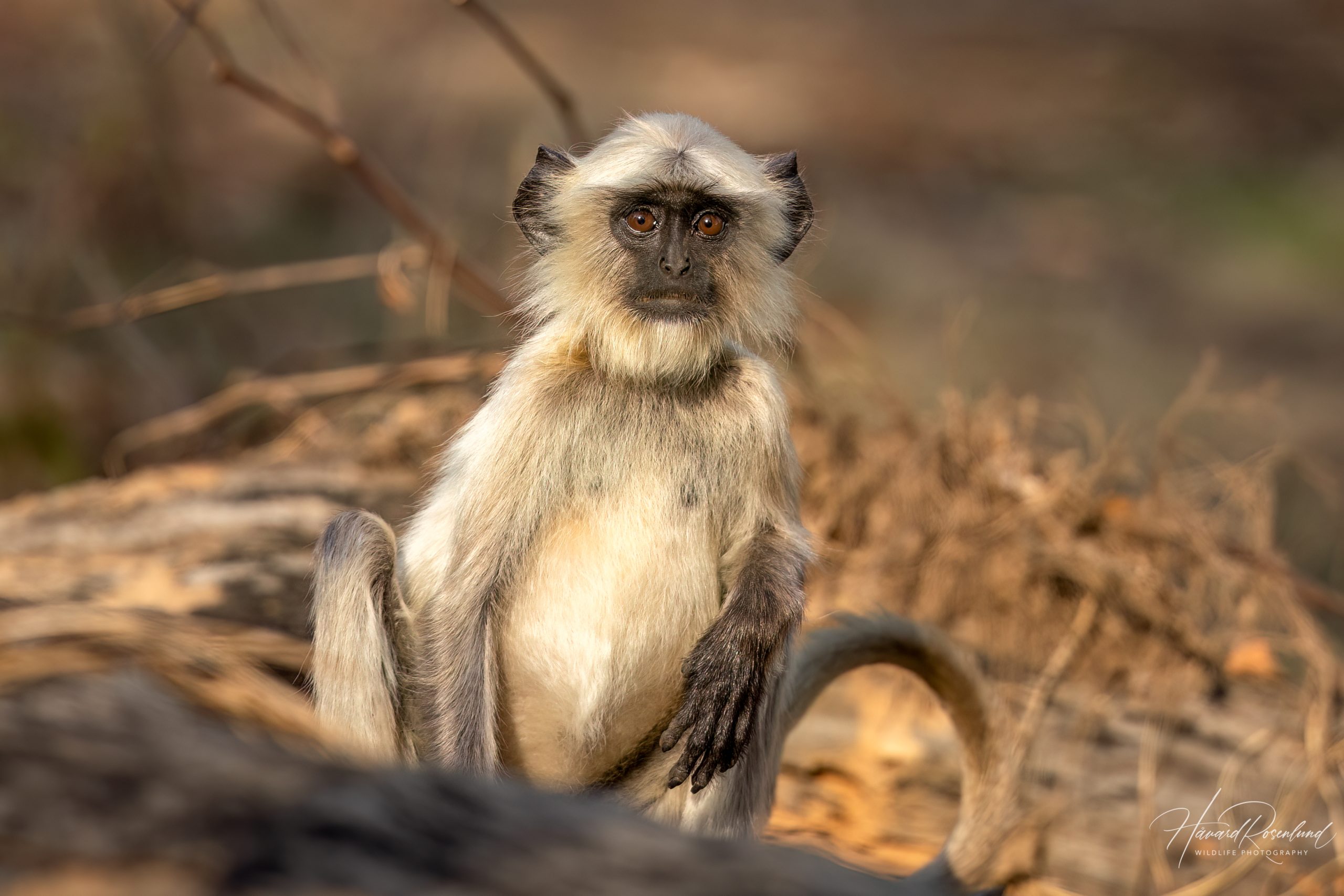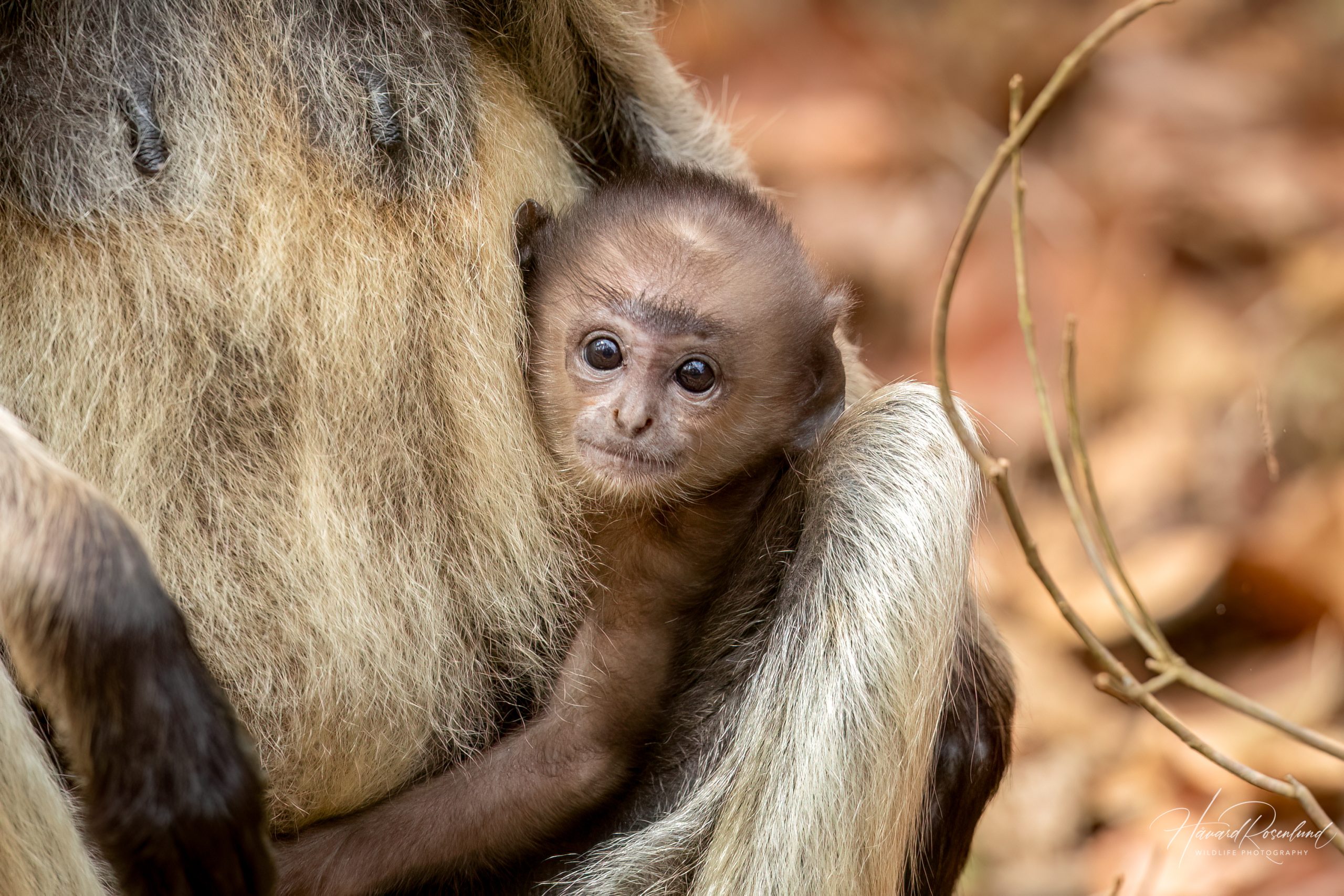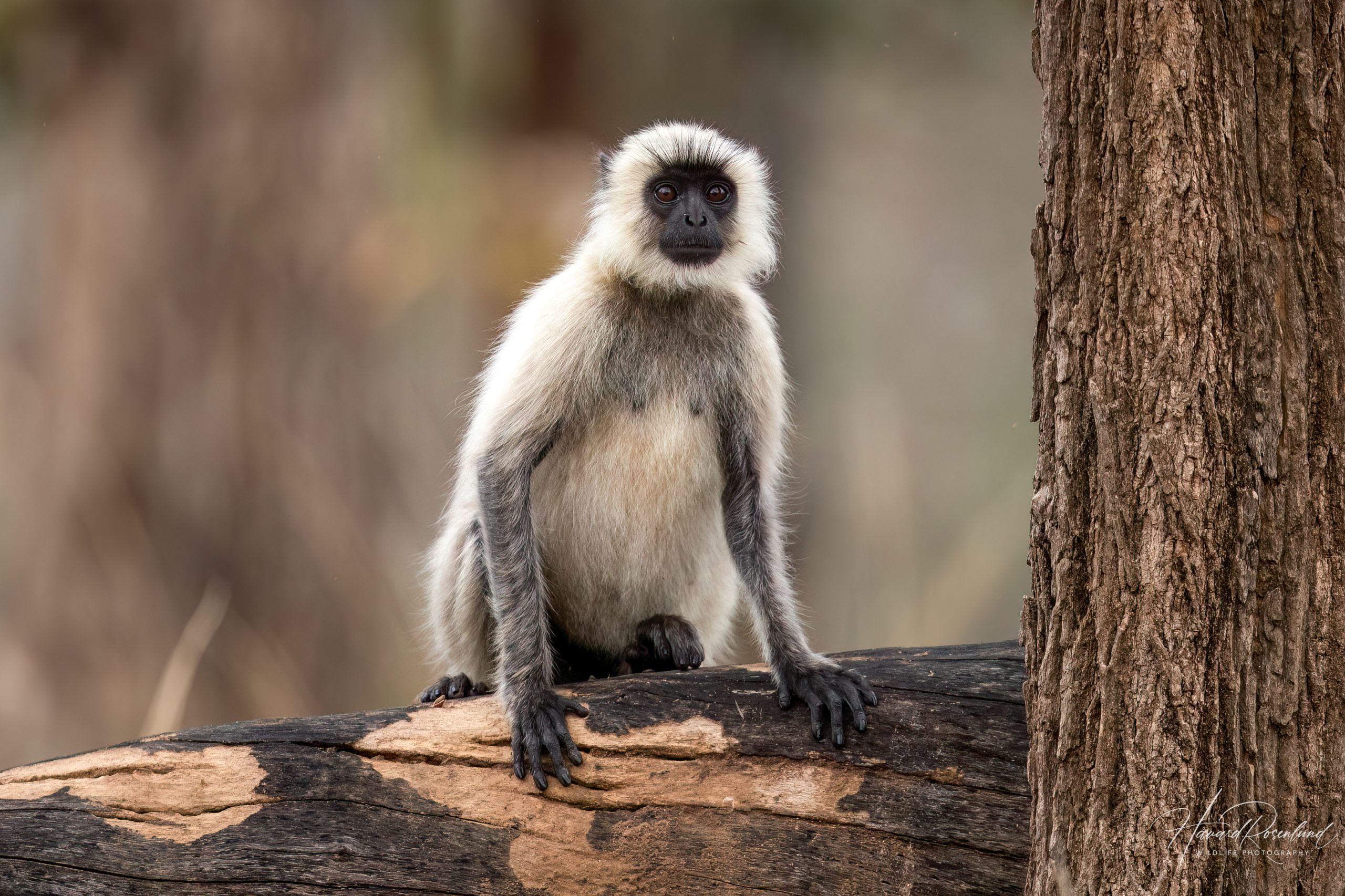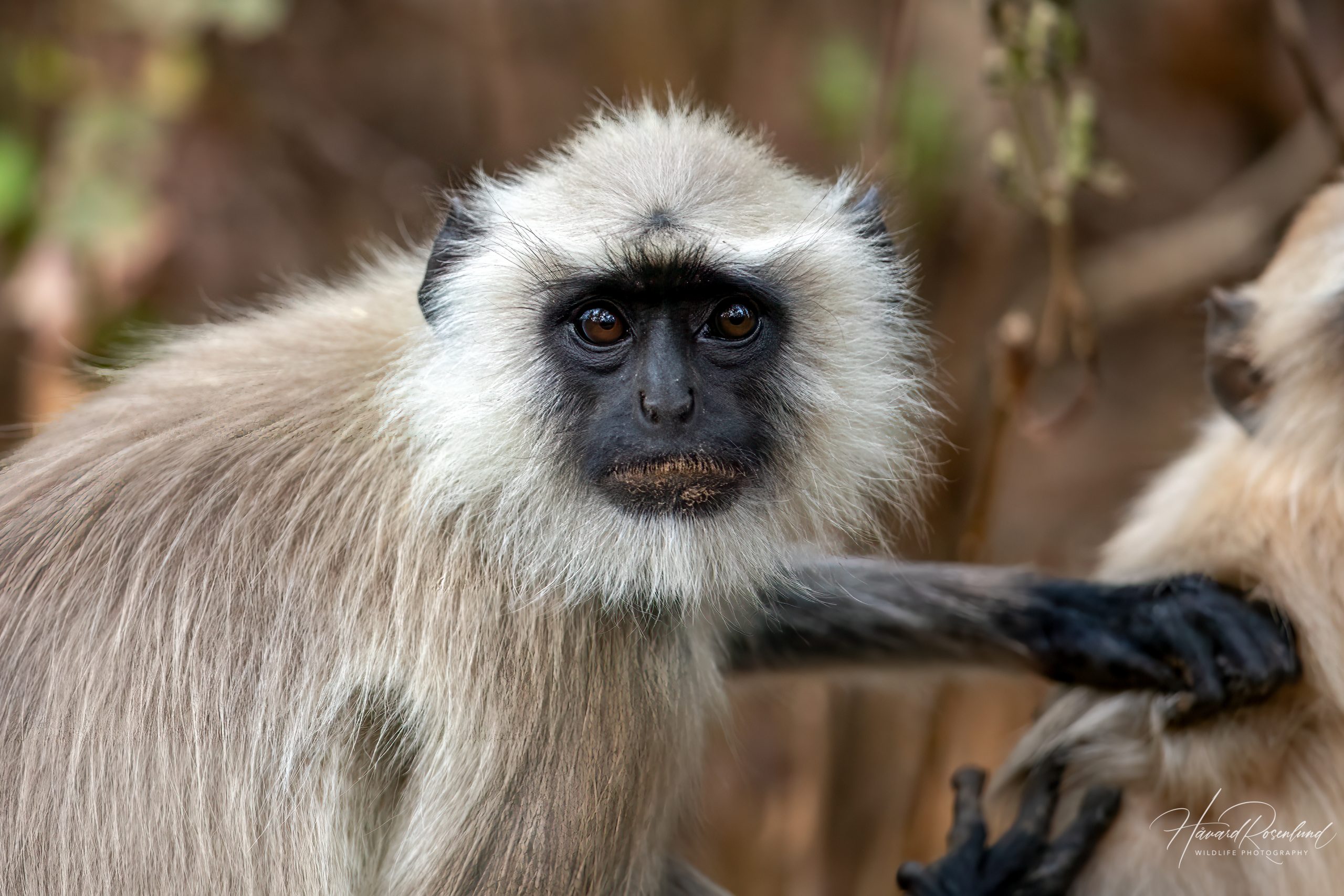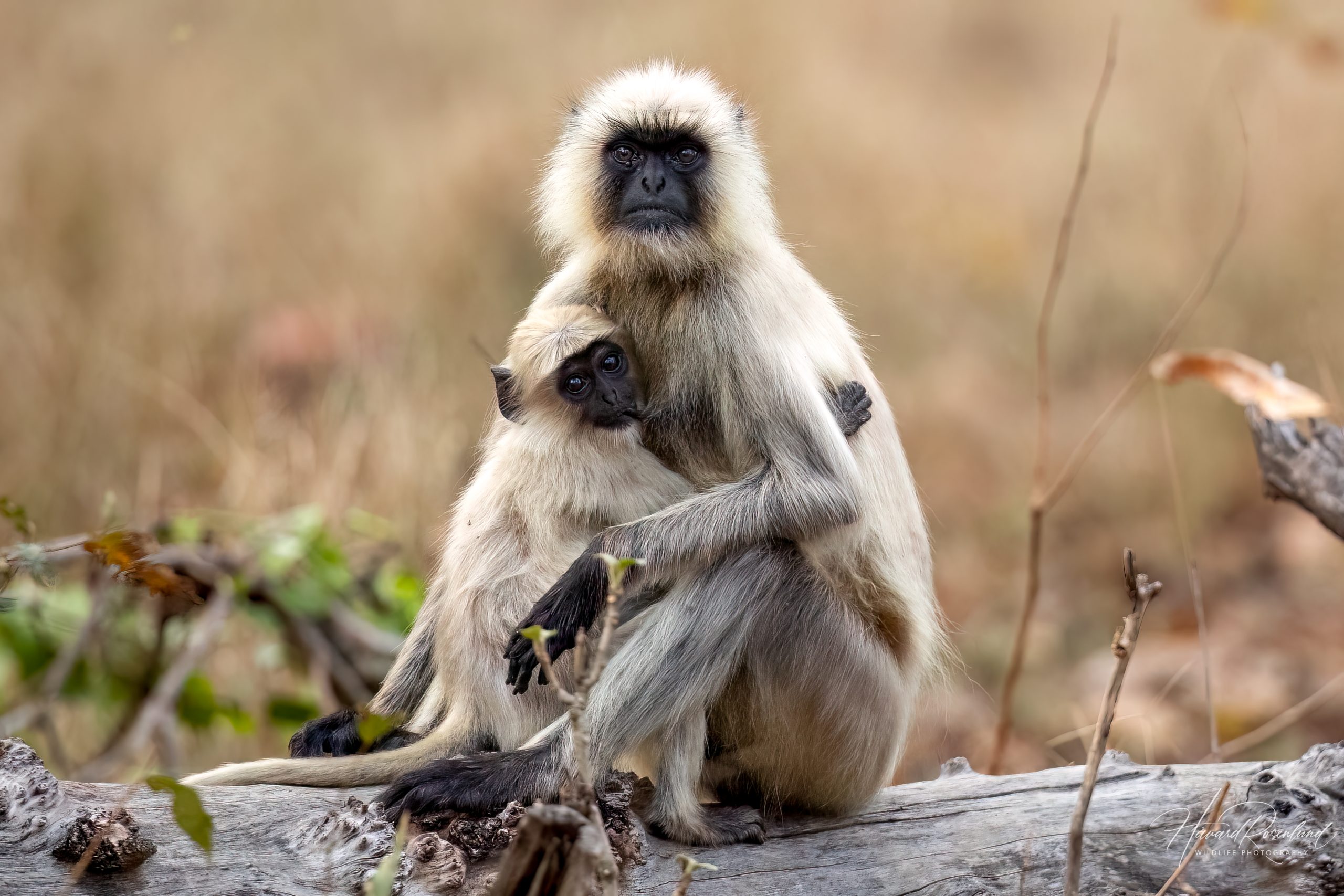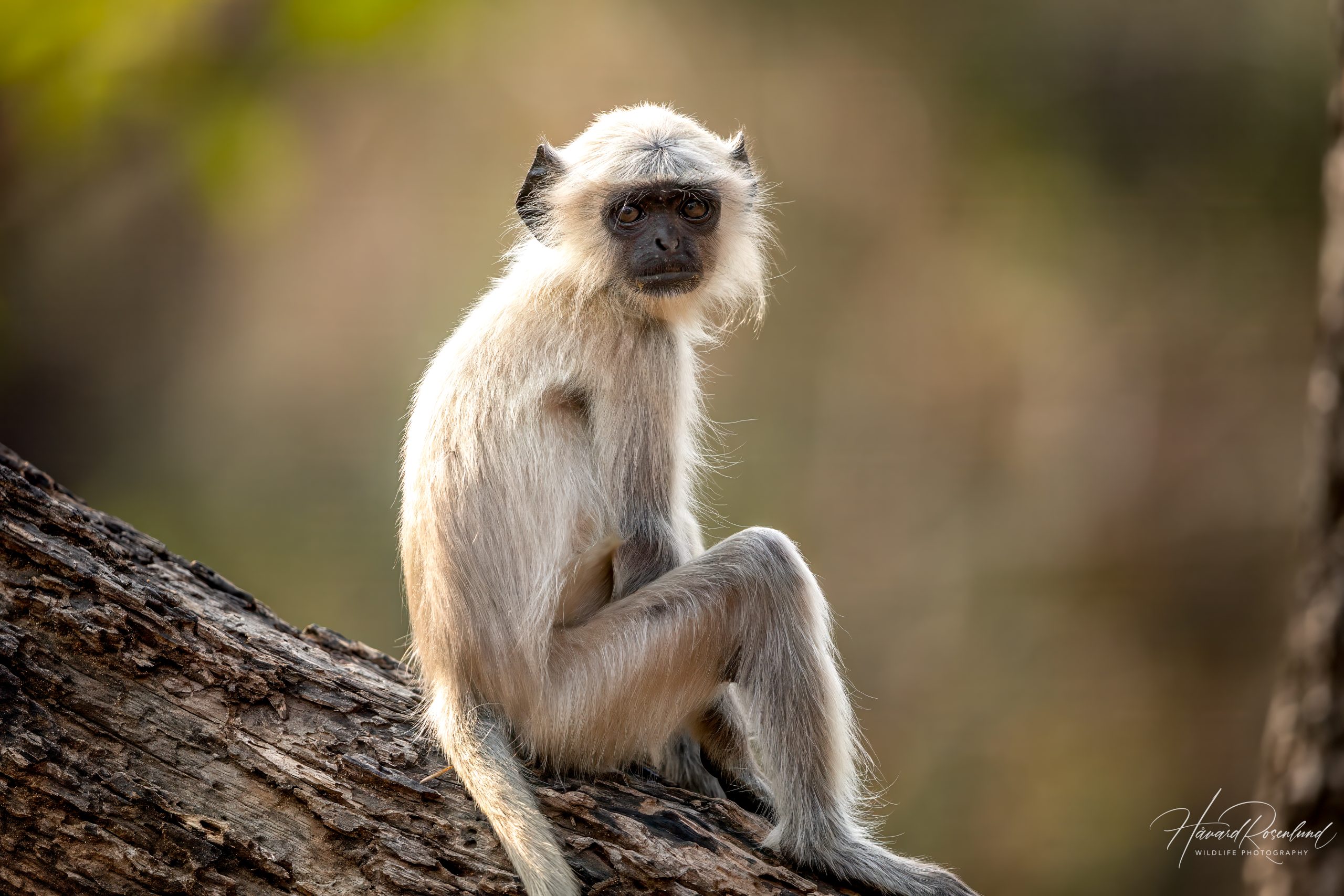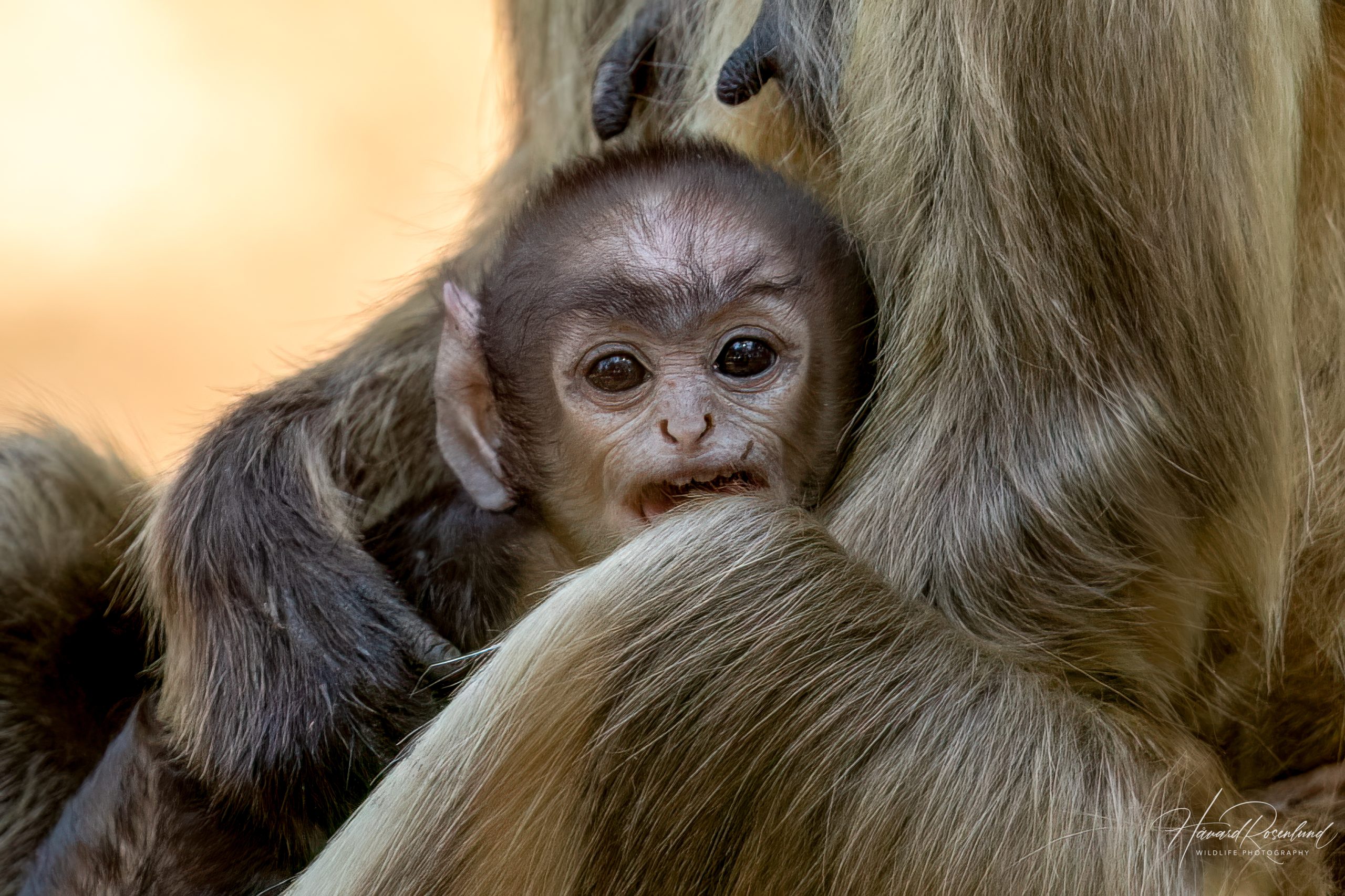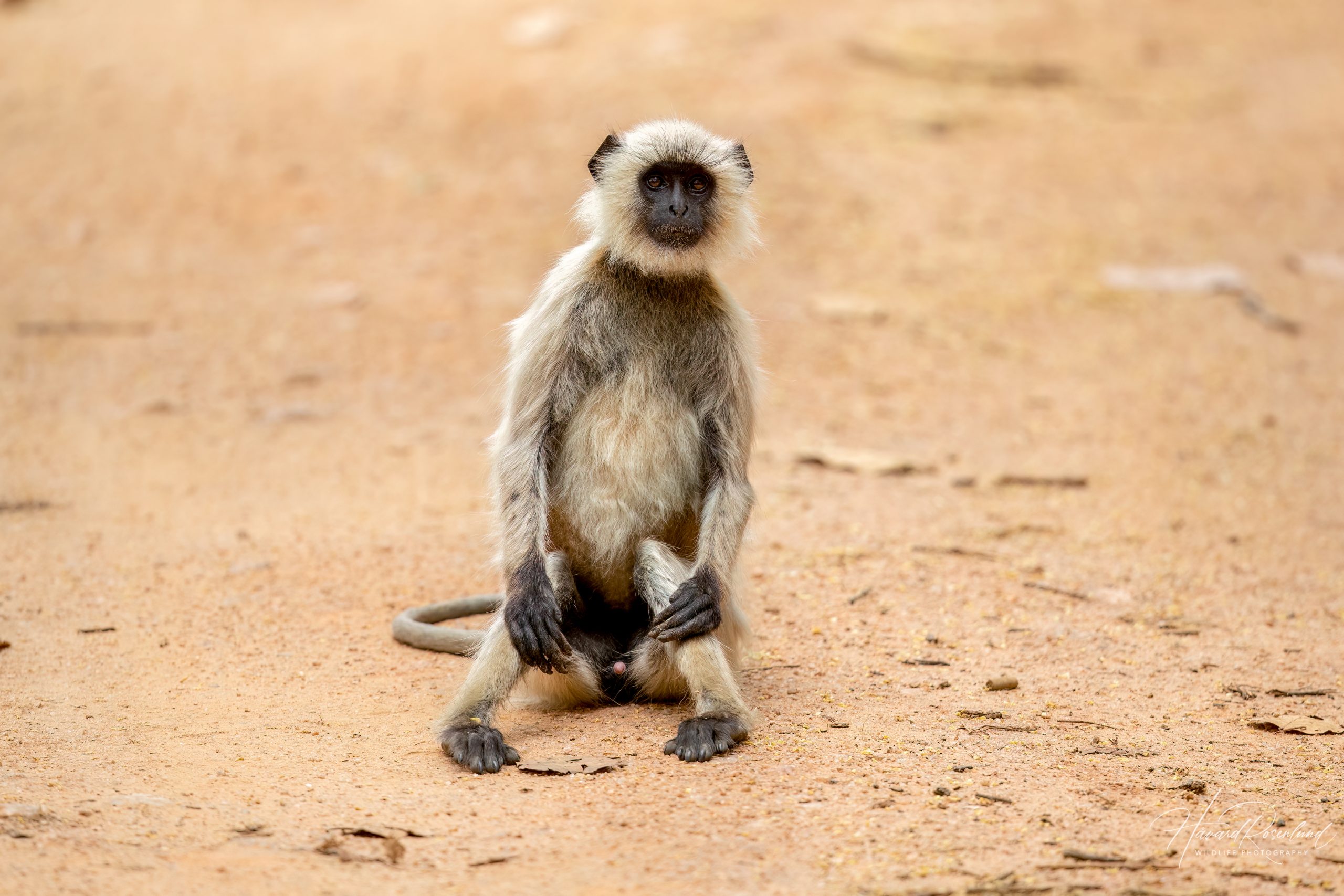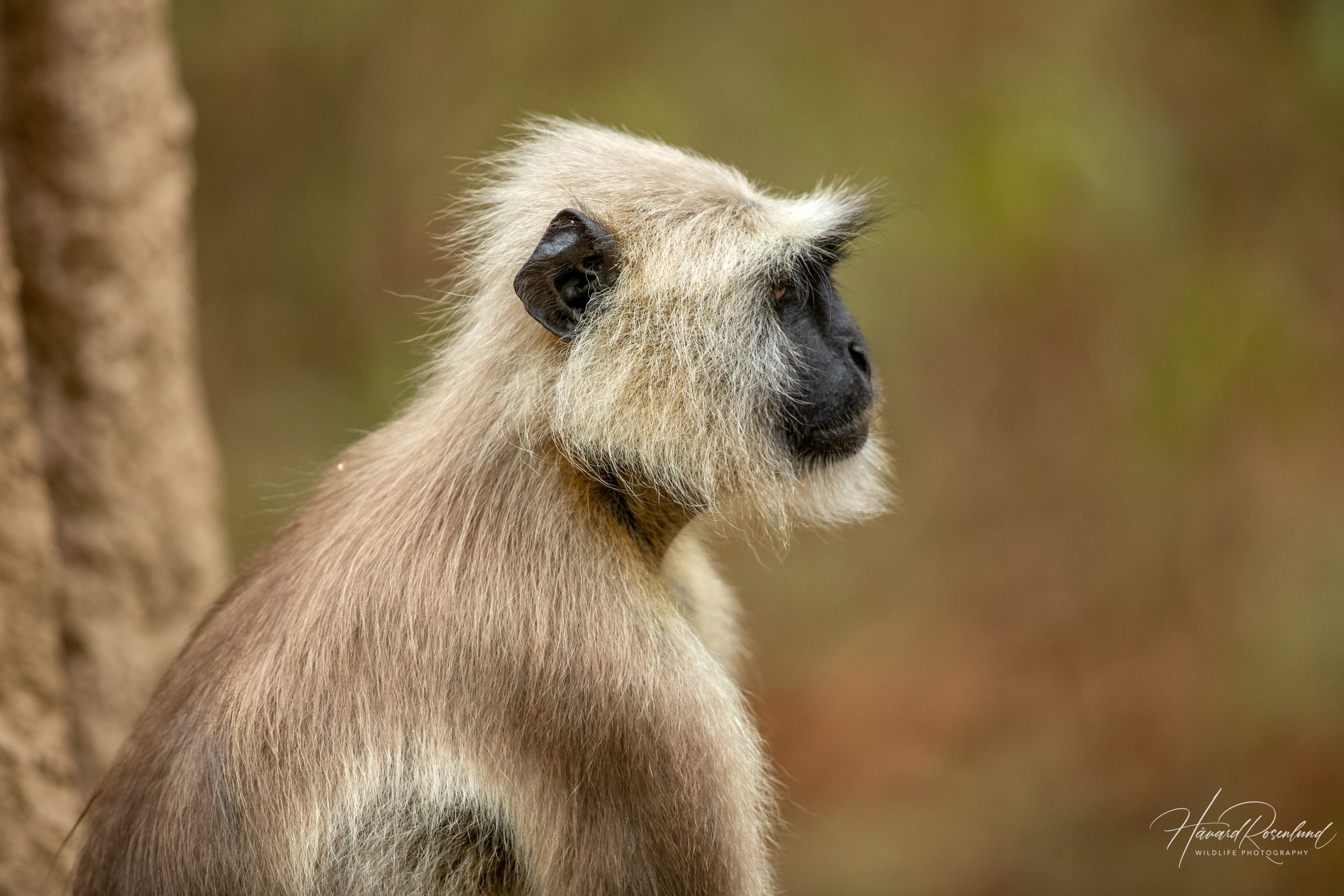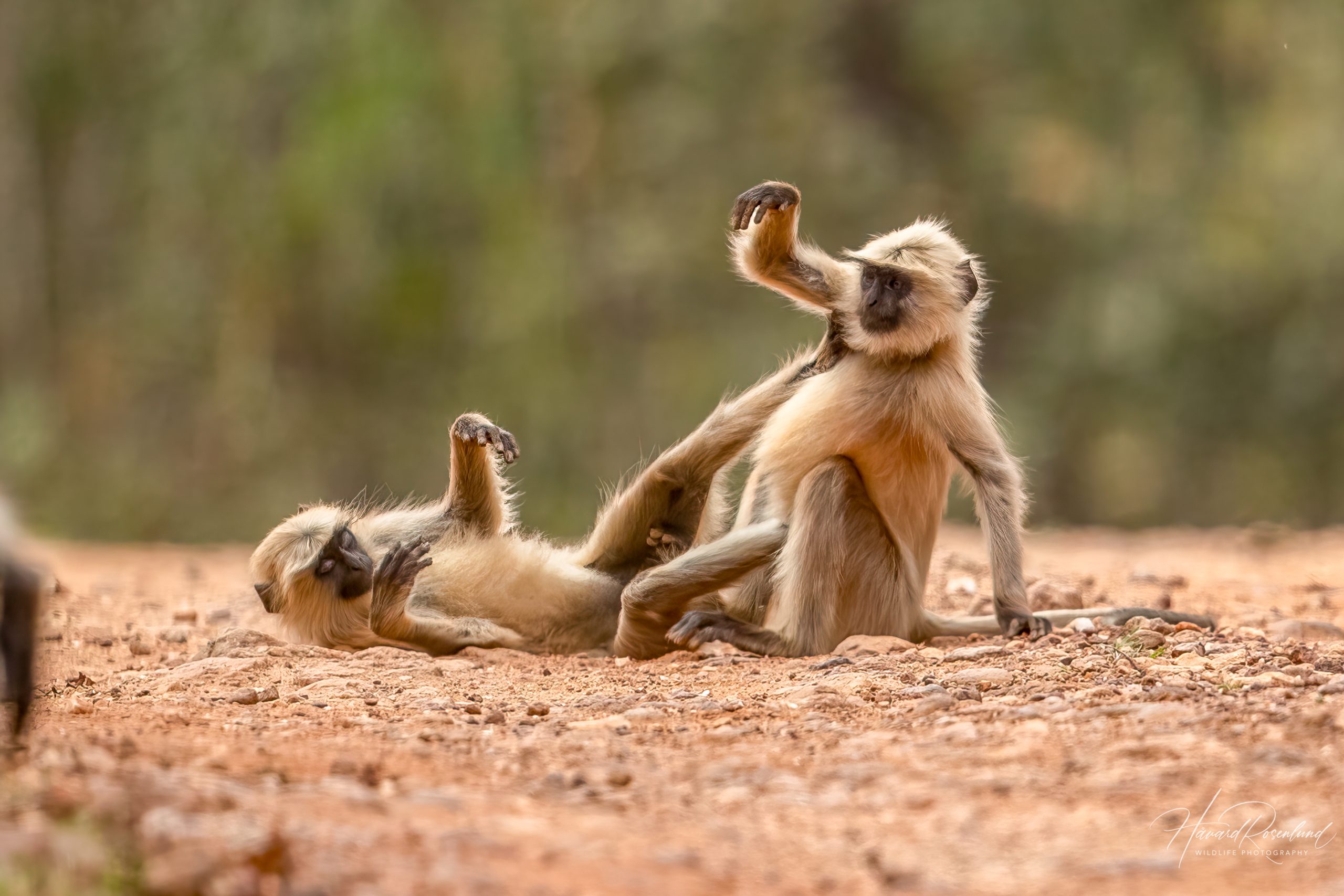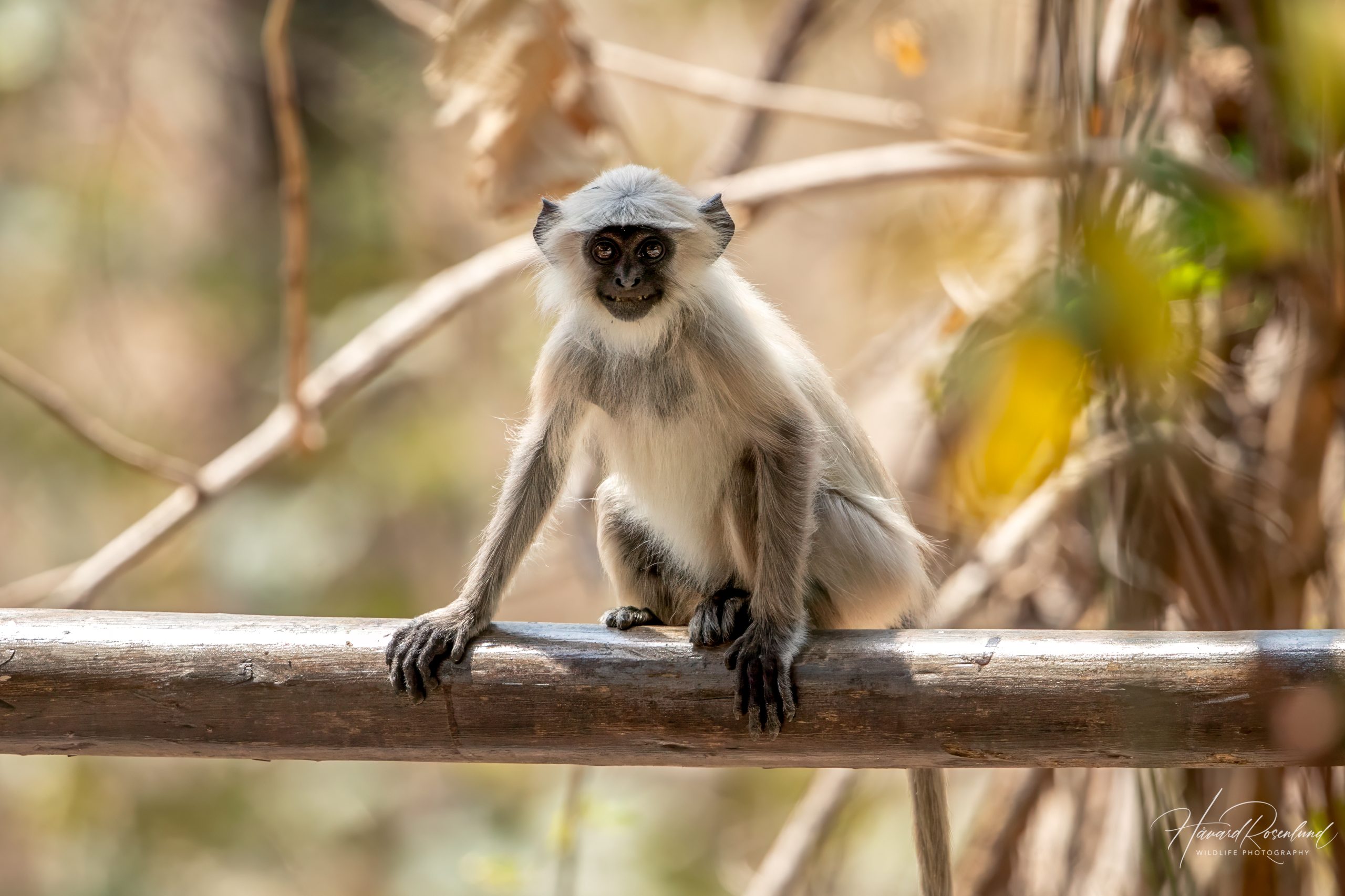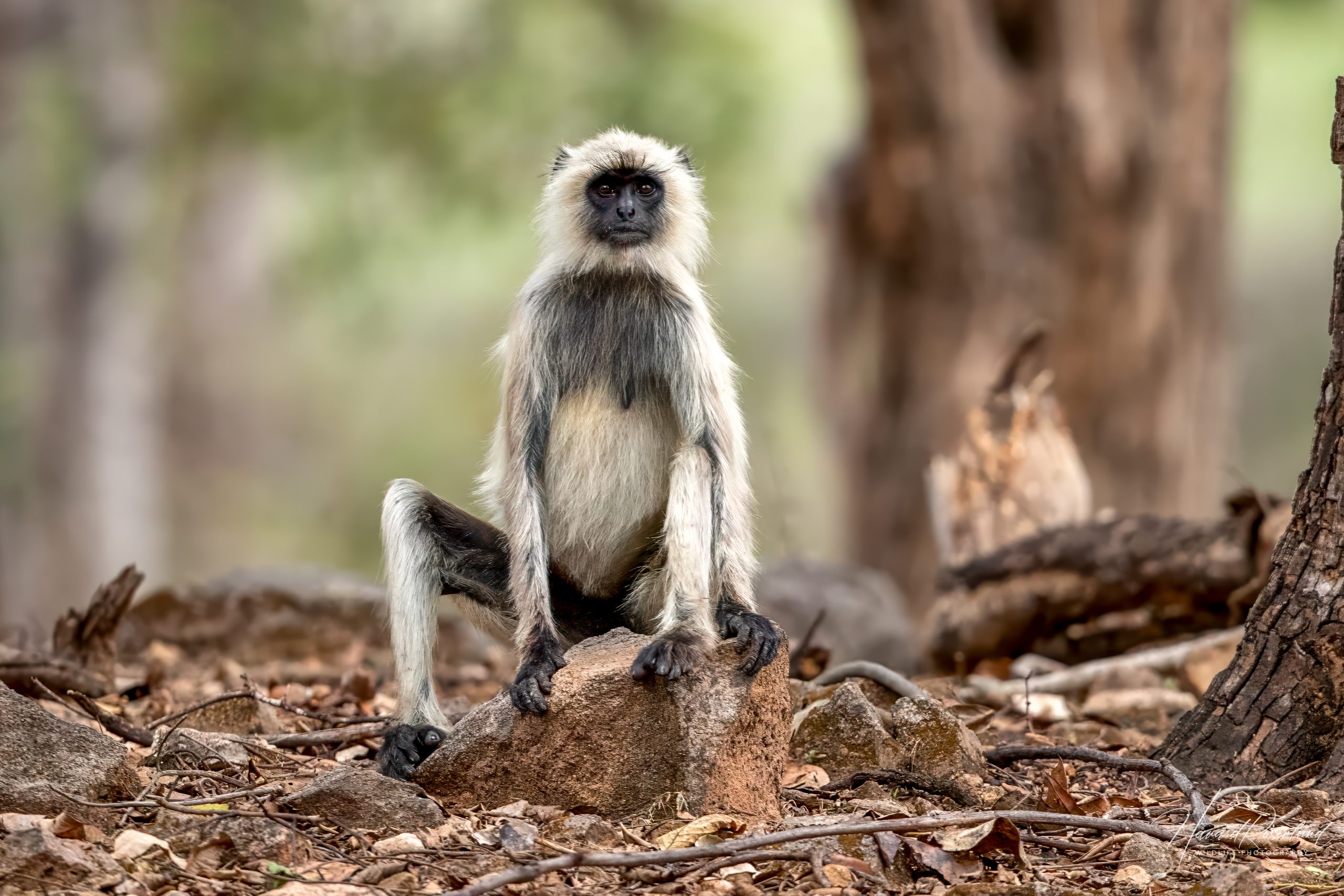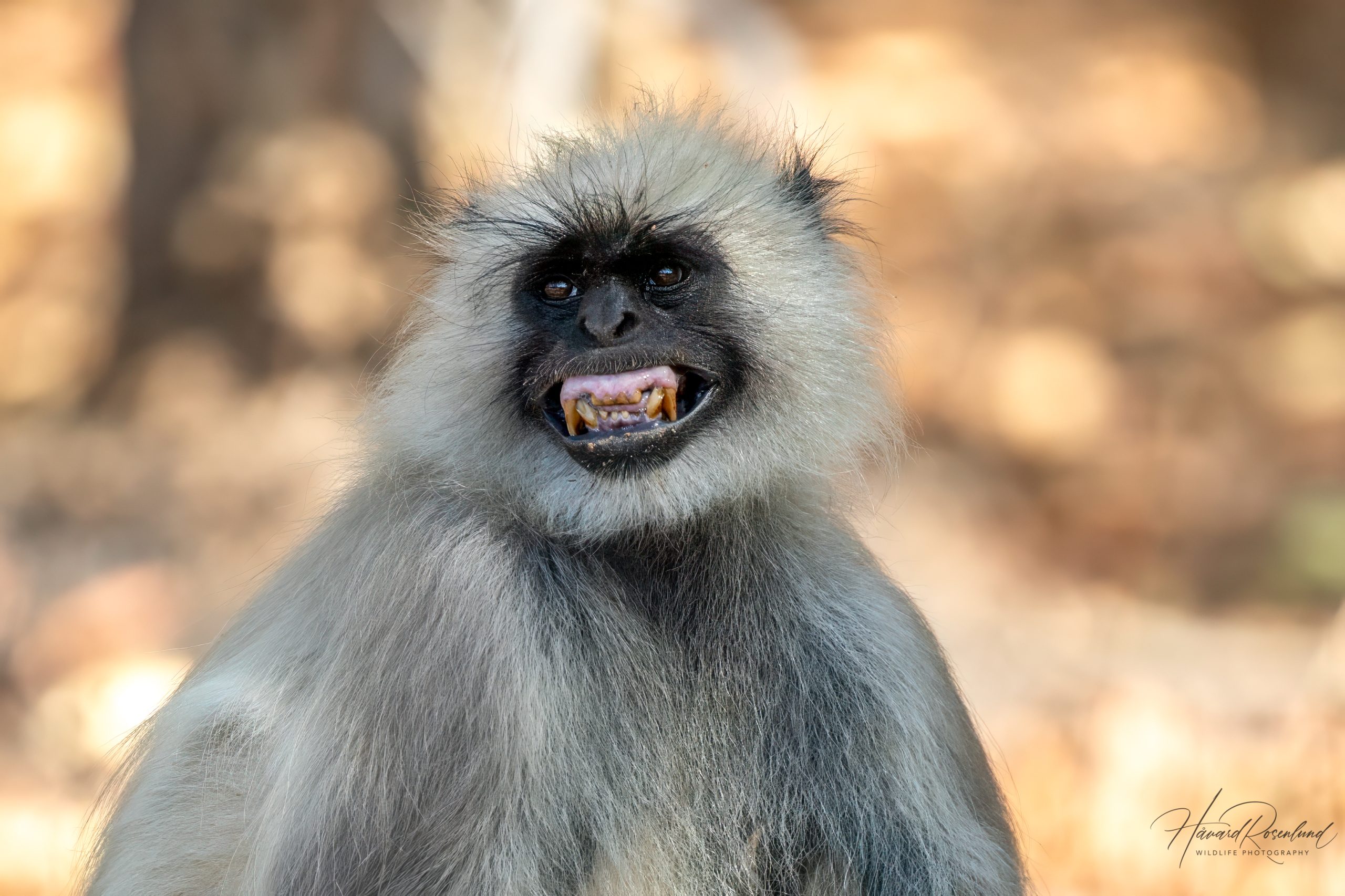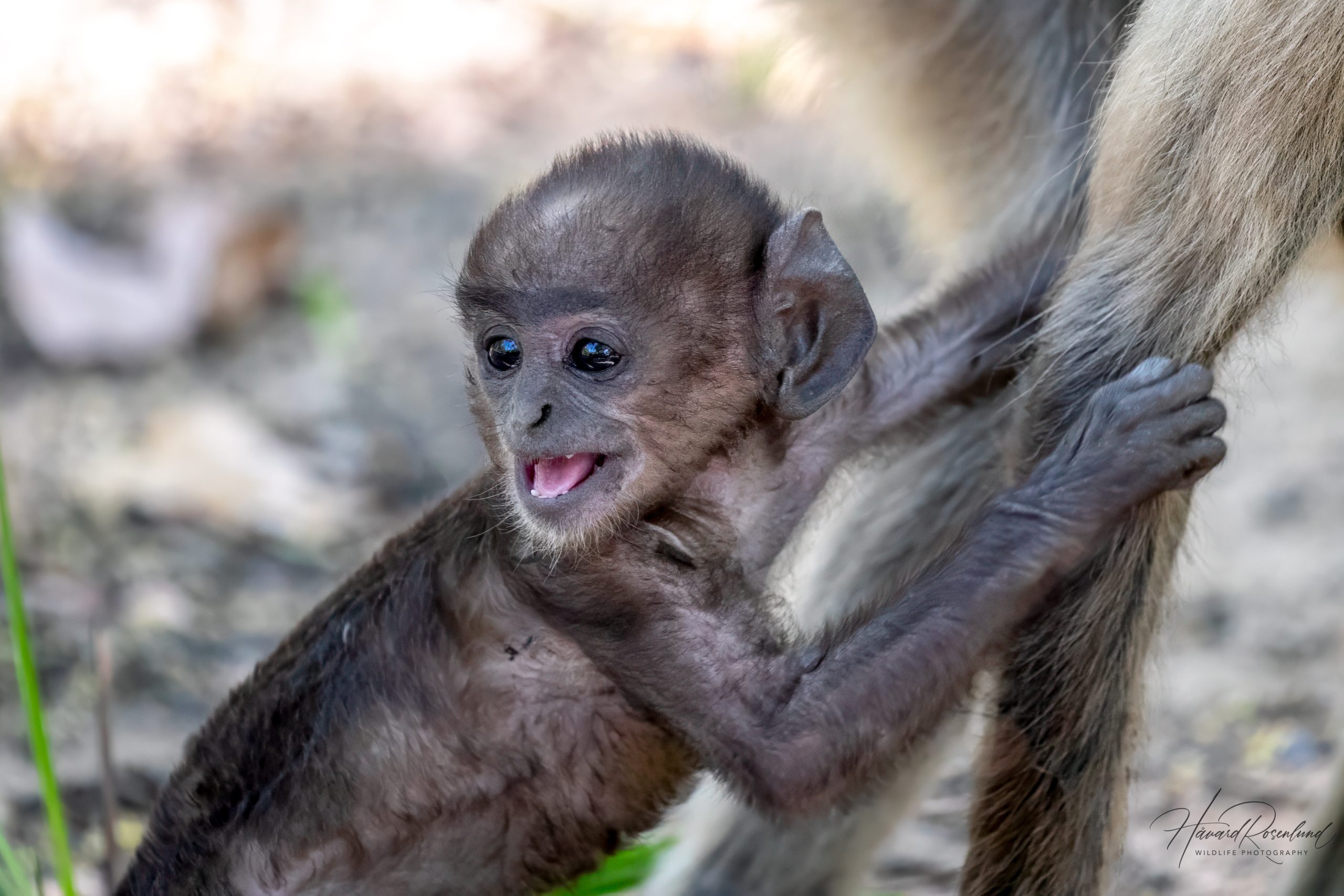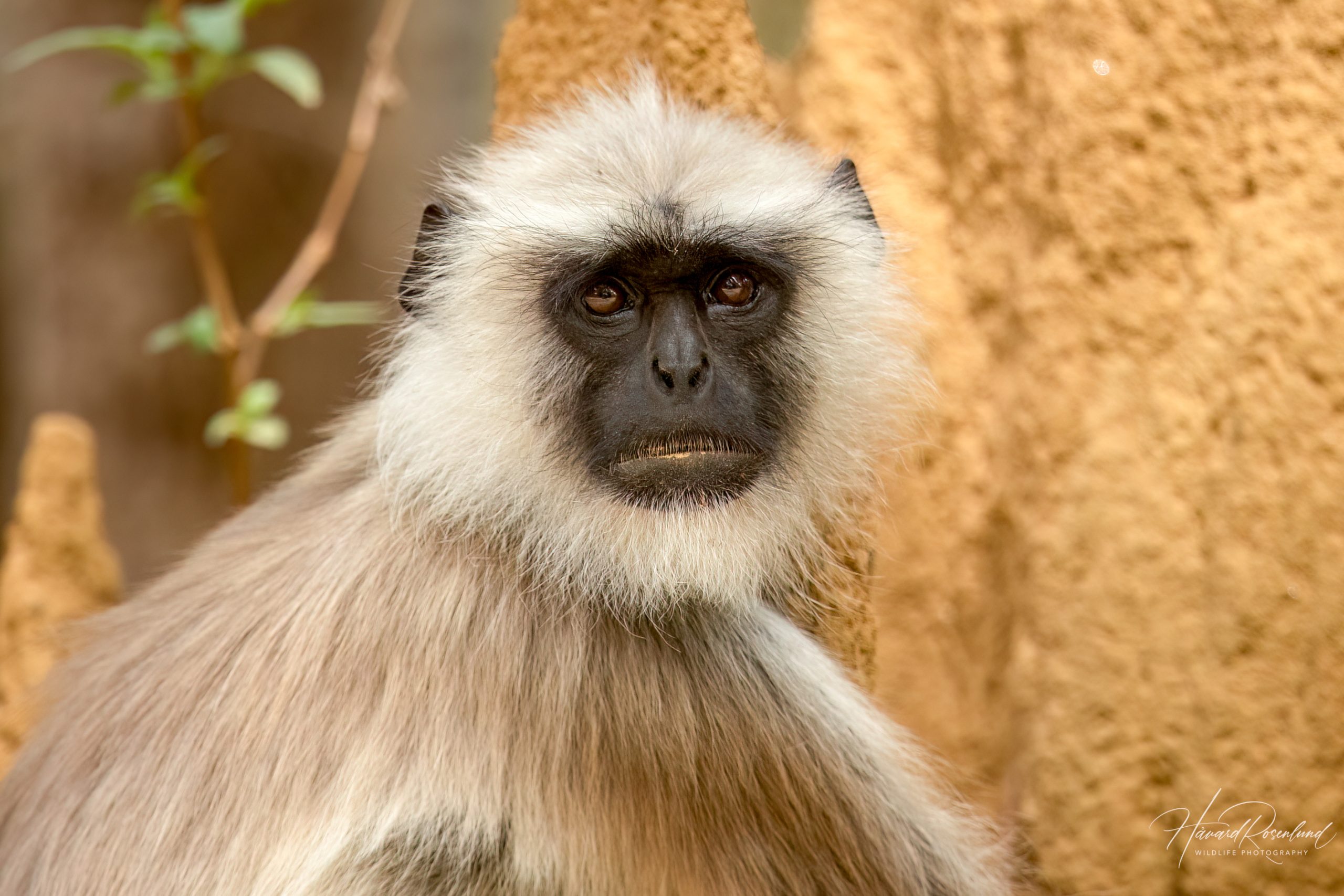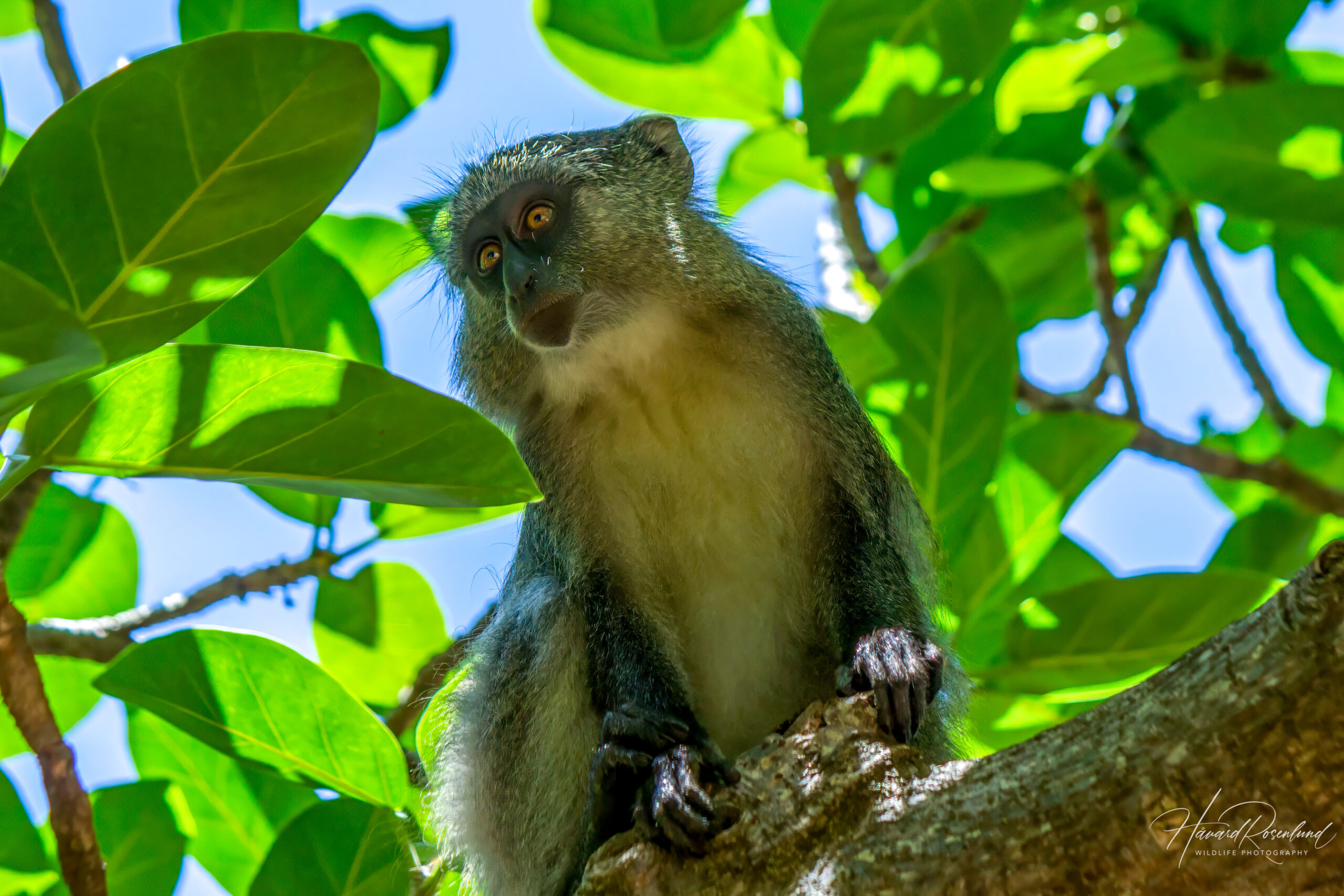Northern Plains Grey Langur
(Semnopithecus entellus)
Description
The northern plains grey langur (Semnopithecus entellus), also known as the Hanuman langur, is a primate species native to the Indian subcontinent. This species is characterized by its slender body, long limbs, and a tail that often exceeds the length of its body. Adults typically measure about 51-78 cm (20-31 in) in body length, with a tail length of 69-101 cm (27-40 in), and weigh between 15-20 kg (33-44 lbs). The fur is predominantly grey with a dark face, ears, and feet. Distinct from other grey langurs, the northern plains grey langur lacks a crest and has yellow tint to its fur. Historically grouped under a single species, grey langurs have now been classified into multiple species based on recent genetic studies and morphological differences.
Diet & habitat
Northern plains grey langurs are highly adaptable and inhabit a range of environments including forests, savannas, urban areas, and agricultural lands. Unlike many other primate species, langurs are known to be less aggressive and more tolerant towards human presence, and are therefore common in human environments. They are primarily folivorous, feeding on leaves, fruits, flowers, and seeds. Their diet also occasionally includes insects and small vertebrates. Langurs employ a method of foraging that involves systematic plucking and chewing of leaves, ensuring they extract maximum nutritional value.
Behavior
These langurs are diurnal and arboreal, spending a significant amount of time in the trees but also foraging on the ground. They live in complex social groups that can range from small family units to larger troops of up to 100 individuals. Social hierarchy within these groups is distinct, with a dominant male presiding over multiple females and their offspring. Langurs communicate using a variety of vocalizations, gestures, and facial expressions to maintain group cohesion and deter predators. Their long tails are also used for communication (as well as balance), with various tail positions conveying different social signals.
Here is a short video of some northern plains grey langurs playing in the road @ Bandhavgarh National Park, India:
Reproduction
The breeding season for northern plains grey langurs generally peaks during the dry season. Females exhibit overt signs of estrus, and mating is typically initiated by the dominant male. After a gestation period of approximately 200 days, females give birth to a single infant. Infants are cared for by the mother and other females in the troop, a behavior known as alloparenting. This cooperative care helps increase the survival rate of the young. Langurs have a life expectancy of around 20 years in the wild.
Relationship to humans
The northern plains grey langur holds significant cultural importance in South Asia, especially in Hinduism where they are revered as manifestations of the deity Hanuman. They are often found in and around temples and are fed by devotees, reinforcing their symbiotic relationship with human communities. However, this close association sometimes leads to conflicts, particularly when langurs raid crops or enter homes in search of food.
Status
Currently, the northern plains grey langur is classified as least concern by the IUCN Red List, though certain populations face threats from habitat destruction, human-wildlife conflict, and hunting. Conservation efforts are crucial to ensure the stability of their populations, particularly in regions where urbanization and agricultural expansion are encroaching on their natural habitats.






